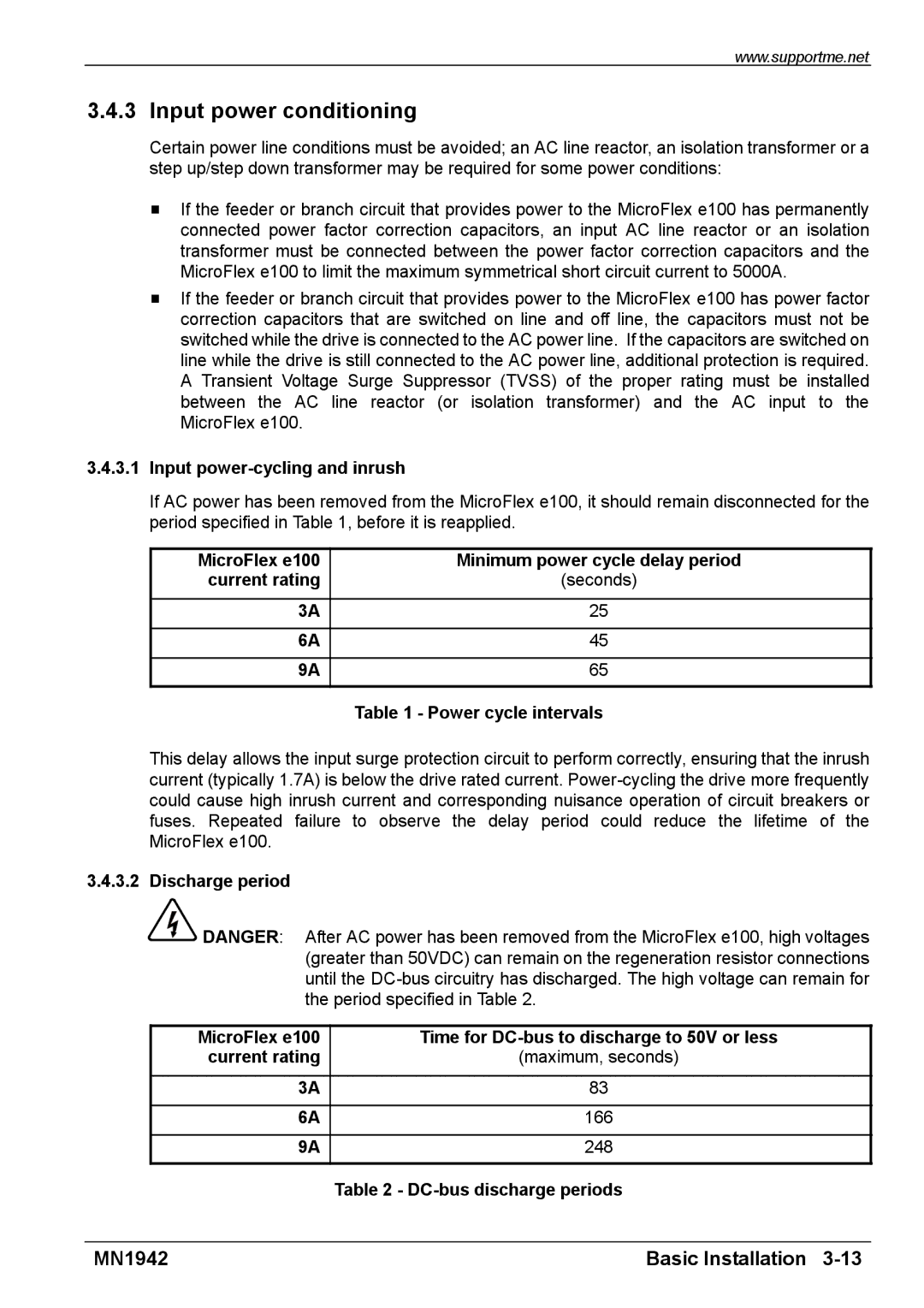
www.supportme.net
3.4.3 Input power conditioning
Certain power line conditions must be avoided; an AC line reactor, an isolation transformer or a step up/step down transformer may be required for some power conditions:
HIf the feeder or branch circuit that provides power to the MicroFlex e100 has permanently connected power factor correction capacitors, an input AC line reactor or an isolation transformer must be connected between the power factor correction capacitors and the MicroFlex e100 to limit the maximum symmetrical short circuit current to 5000A.
HIf the feeder or branch circuit that provides power to the MicroFlex e100 has power factor correction capacitors that are switched on line and off line, the capacitors must not be switched while the drive is connected to the AC power line. If the capacitors are switched on line while the drive is still connected to the AC power line, additional protection is required. A Transient Voltage Surge Suppressor (TVSS) of the proper rating must be installed between the AC line reactor (or isolation transformer) and the AC input to the MicroFlex e100.
3.4.3.1Input power-cycling and inrush
If AC power has been removed from the MicroFlex e100, it should remain disconnected for the period specified in Table 1, before it is reapplied.
MicroFlex e100 | Minimum power cycle delay period |
current rating | (seconds) |
|
|
3A | 25 |
|
|
6A | 45 |
|
|
9A | 65 |
Table 1 - Power cycle intervals
This delay allows the input surge protection circuit to perform correctly, ensuring that the inrush current (typically 1.7A) is below the drive rated current.
3.4.3.2 Discharge period
![]() DANGER: After AC power has been removed from the MicroFlex e100, high voltages (greater than 50VDC) can remain on the regeneration resistor connections until the
DANGER: After AC power has been removed from the MicroFlex e100, high voltages (greater than 50VDC) can remain on the regeneration resistor connections until the
MicroFlex e100 | Time for |
current rating | (maximum, seconds) |
|
|
3A | 83 |
|
|
6A | 166 |
|
|
9A | 248 |
|
|
Table 2 -
MN1942 | Basic Installation |
